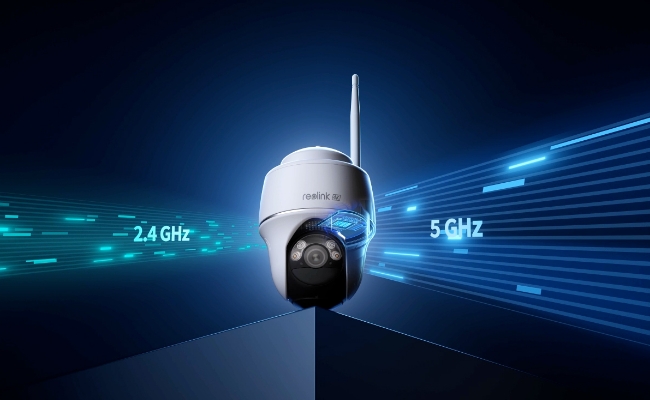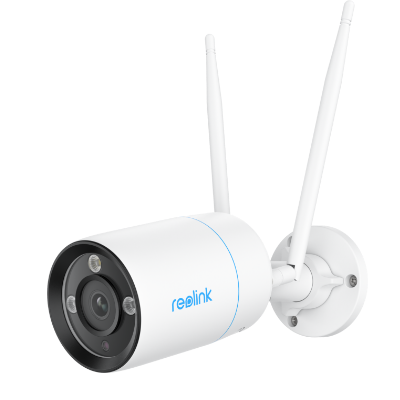2.4 vs. 5 GHz: Battle of Frequencies

In our digitally connected world, understanding the technology that powers our devices is crucial. The debate of 2.4 vs 5 GHz is more than just numerical values – it's about optimizing your WiFi experience. The two frequency bands, 2.4 GHz and 5 GHz are fundamental to how our devices communicate and connect.
Whether you're choosing a frequency for your home network or curious about 5 GHz vs 2.4 GHz, understanding their differences can significantly improve your connectivity. Factors like range, speed, and interference come into play when considering 2.4 vs 5 GHz WiFi. Let’s get down to learning the key distinctions between the two.
2.4GHz vs 5GHz: What Are The Differences?
When discussing 2.4 GHz vs 5 GHz, the primary difference lies in their speed: the 5 GHz frequency band provides faster data rates at shorter distances, while the 2.4 GHz frequency band offers slower speeds but broader coverage. Besides, the following are the primary factors that differentiate the two:
Speed
In terms of 2.4 vs 5 GHz speed, the 5 GHz band has a significant advantage. It offers higher data transfer rates, which means faster loading times and smoother streaming experiences.
This is why it's often preferred for activities requiring high bandwidth, such as gaming or streaming HD videos. However, the 2.4 vs 5 GHz WiFi speed is a trade-off scenario.
While 5 GHz offers faster speeds, its signal does not penetrate materials like walls and floors as effectively as the 2.4 GHz band. Thus, the 2.4 GHz vs 5 GHz speed difference really depends on your distance from the router and the physical obstructions in your environment.
Interference
The 2.4 GHz frequency band is often subject to interference from other devices, such as microwaves, Bluetooth gadgets, and cordless phones, which can cause issues with WiFi performance. In comparison, the 5 GHz band is less susceptible to such congestion and interference.
Range And Penetration
When comparing the 2.4 vs 5 GHz range, the 2.4 GHz frequency band takes the lead. It is capable of covering a larger area and penetrating solid objects more effectively. This makes it ideal for use in large spaces and multi-story buildings.
The 2.4 vs 5 GHz distance capability makes the 2.4 GHz band more suitable for widespread coverage. However, the WiFi 2.4 vs 5 GHz distance performance varies based on the specific environment and obstructions present.
In comparison, the 2.4 GHz vs 5 GHz distance performance of the 5 GHz band is less, but it offers faster speeds.
Channel Availability
When talking about 2.4 vs 5 GHz channels, the 5 GHz band has a greater advantage. It has more channels available and is less crowded compared to the 2.4 GHz band, which only has three non-overlapping channels. This reduces the risk of interference and ensures smoother connectivity.
Compatibility
The 2.4 GHz band can accommodate more devices in terms of compatibility. Most modern devices support both frequencies, but some older devices can only be compatible with the 2.4 GHz band.
Thus, when considering a 2.4 vs 5 GHz router, it's essential to consider the devices you'll be connecting. If you have older devices, they may need help to connect to a 5 GHz network.
2.4 vs 5 GHz : Pros & Cons
If you’re wondering about the advantages and downsides of both 2.4 GHz and 5 GHz frequencies, here is a comparison table that highlights both of them for a greater understanding:
5GHz vs 2.4GHz WiFi: When To Use
Choosing between 2.4 GHz vs. 5 GHz WiFi depends on your specific needs. Whether it's gaming, streaming, or connecting a security camera, each frequency has its strengths and weaknesses.
Gaming
When it comes to 2.4 vs 5 GHz for gaming, the 5 GHz frequency is generally better due to its faster speeds, which can handle the high bandwidth needs of modern games. However, if your gaming console is far from the router, the 2.4 GHz frequency might provide a more stable connection due to its longer range.
Router
Many modern routers, including the 2.4 vs 5 GHz Xfinity router, can operate on both frequencies simultaneously. This router 2.4 GHz vs 5 GHz dual-band operation allows you to connect devices to the frequency that suits them best, offering flexibility and performance optimization.
Streaming
When it comes to 2.4 GHz and 5 GHz for streaming, the debate between 2.4 GHz and 5 GHz leans towards the latter. The higher frequency of 5 GHz provides faster data rates. This speed is crucial for streaming high-definition video without buffering interruptions, which can significantly enhance your viewing experience.
However, if your streaming device is located far from the router, the 2.4 GHz band may offer a more reliable connection, ensuring that your stream doesn't suddenly stop or lag.
Security Camera
In the realm of 2.4 and 5 GHz for security cameras, options that operate on dual-band WiFi are standard in the market, such as the ones offered by Reolink. These cameras can switch between 2.4 GHz and 5 GHz depending on the situation, offering flexibility.
The 5 GHz band provides faster data transmission, which is helpful in transmitting high-resolution video. This ensures that you get clear footage from your security camera. Meanwhile, the 2.4 GHz band can provide a more stable connection over a greater distance, which is essential for cameras placed far from the router.
The 5 GHz band offers faster data transmission, which is helpful in transmitting high-resolution video. Meanwhile, the 2.4 GHz band can provide a more stable connection over a greater distance.
4K WiFi 6 Surveillance Camera
4K 8MP Ultra HD, Dual-Band WiFi 6, Color Night Vision, IP67 Waterproof, Smart Detection, Two-Way Audio, Built-in Siren.
Understanding 2.4 GHz and 5 GHz
These two frequencies are radio bands used for wireless communication. They represent the rate at which a wave, in this case, a radio wave, oscillates or cycles per second.
What is 2.4 GHz?
The 2.4 GHz frequency band is a portion of the radio spectrum that has been designated for unlicensed use in many countries. It's widely used for various devices such as WiFi routers, Bluetooth devices, cordless phones, and even microwaves.
This frequency offers a good balance of speed and range, but it can be prone to interference due to its widespread use.
What is 5 GHz?
The 5 GHz frequency band is employed for wireless communication as it offers faster data transmission rates than the congested 2.4 GHz band. It is ideal for high-bandwidth activities like gaming and video streaming. However, it has a shorter range and is less effective at penetrating walls and obstacles compared to the 2.4 GHz band.
2.4 GHz, 5 GHz, and 6 GHz: Which One is Better?
The choice between 2.4 GHz, 5 GHz, and 6 GHz depends on your specific needs and circumstances. Each frequency has its strengths and weaknesses.
6 GHz is the newest addition to the WiFi spectrum. It has more channels and less congestion than the other two bands, which means it can support more devices at higher speeds. It is perfect for high-demand applications like virtual reality, high-definition video streaming, and online gaming.
However, similar to the 5 GHz band, its range is shorter, and it's less capable of penetrating solid objects compared to 2.4 GHz.
FAQs
Should I Choose 2.4 GHz or 5 GHz For Mobile Hotspot?
Choose 5 GHz for faster speeds if the devices are close to the hotspot, but 2.4 GHz for better range and wall penetration.
Is 5GHz Good For Gaming?
Yes, 5 GHz offers faster speeds and is less prone to interference, making it ideal for gaming.
What Devices Should Be On 2.4 GHz And 5 GHz?
Devices requiring high-speed connections, like gaming consoles and streaming devices, should be on 5 GHz, while devices further from the router or requiring less bandwidth can use 2.4 GHz.
Is 2.4 GHz Better Than 5 GHz?
Both options have their advantages depending on the situation. The 2.4 GHz frequency has a more extended range and can penetrate walls better, while the 5 GHz frequency offers faster speeds and less interference.
Conclusion
Choosing between 2.4 GHz vs 5 GHz WiFi significantly depends on your specific needs and circumstances. For activities requiring high bandwidth, like gaming and streaming, the 5 GHz frequency is typically better due to its faster speeds.
However, for better range and wall penetration, especially for devices like security cameras, the 2.4 GHz band may be more suitable. The latest addition to the spectrum, the 6 GHz, offers even higher speeds and less congestion, albeit with a shorter range. Which frequency do you choose when using WiFi? Share your thoughts with us in the comment section below! Let's discuss together!
Search
Be in the Know
Security insights & offers right into your inbox

